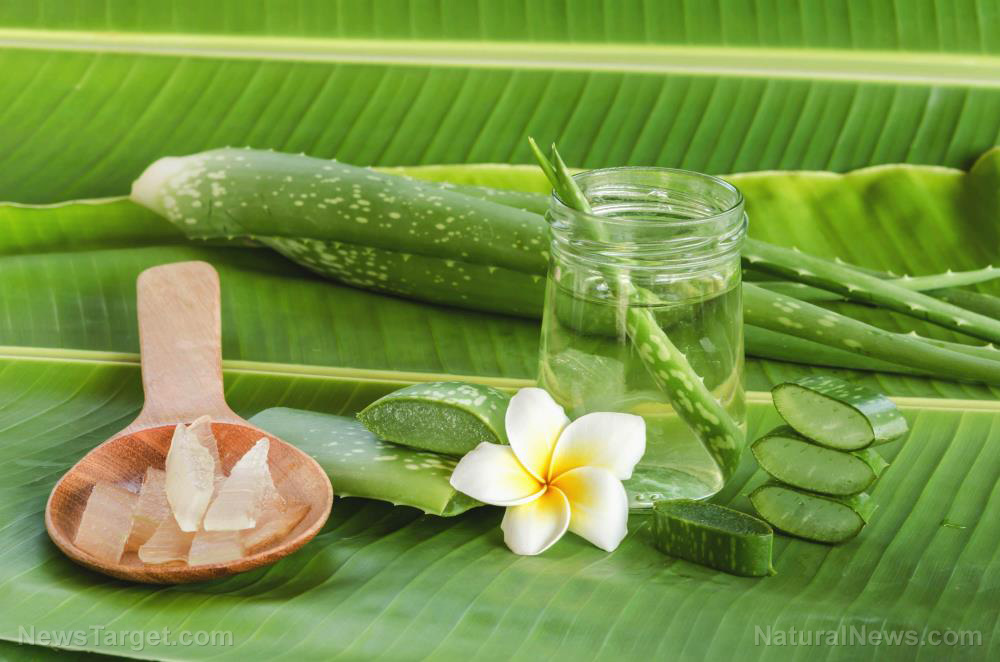
What is antibiotic resistance?
When SHTF, you need to make sure you are prepared to deal with bacteria and contagious diseases. Before you get sick, read up on medicinal herbs that work synergistically with conventional antibiotics, which is important if you're worried about antibiotic resistance. As the name implies, antibiotic resistance occurs when germs like bacteria and fungi develop the ability to defeat the drugs that are used to kill them. This is worrisome because the germs aren't killed and continue to grow. Every year over 2.8 million antibiotic-resistant infections occur in America. According to the Centers for Disease Control and Prevention (CDC)'s 2019 Antibiotic Resistance (AR) Threats Report, over 35,000 people die as a result. When Clostridioides difficile (C. difficile), a bacterium that isn't usually resistant but can cause deadly diarrhea and is linked to antibiotic use, is added to the data, the U.S. toll of all the threats in the report exceeds a shocking three million infections and 48,000 deaths. Antibiotic resistance can potentially affect people of all ages working in the potential to affect people at any stage of life and the healthcare, veterinary and agriculture industries. It is also one of the world’s most urgent public health problems.Pairing antibiotics with the right herbs
While antibiotic resistance is alarming, the good thing is using the right herbs can also help reduce the time for healing to occur and reduce the number of pills you need to take. In a post-SHTF, this might just save your life because it can help make your supplies last a little longer. However, not all physicians are familiar with the use of medicinal herbs. Before SHTF, do your research so you're prepared when bacteria strike. (Related: 10 Potent herbs to protect your respiratory system.) Below is a list of commonly used antibiotics and the medicinal herbs you can pair with them to maximize their efficacy. Some lines might include notes on certain conditions or bacteria where the combination of an antibiotic and herb is particularly effective.- Prescription depends on infection – Piperine or licorice. Piperine is a bioactive compound found in black pepper. It is an alkaloid that can help relieve headaches, nausea and poor digestion. Piperine also has anti-inflammatory properties. Use piperine or licorice with antibiotics when treating infections caused by gram-negative bacteria.
- Ampicillin – Japanese barberry, juniper, nasturtium, pomegranate and thyme.
- Bacitracin – Ginger and thyme.
- Ceftriaxone – Isatis. Use this pairing when treating methicillin-resistant Staphylococcus aureus (MRSA).
- Chloramphenicol – Nasturtium and pomegranate.
- Ciprofloxacin – Isatis, pomegranate and rosemary. Use isatis for MRSA and rosemary for Klebsiella pneumoniae.
- Clarithromycin – Ginger and usnea can be used when treating H. pylori.
- Erythromycin – Juniper and thyme.
- Fluconazole – Japanese barberry.
- Gentamycin – Ginger, isatis and pomegranate. Use isatis for MRSA.
- Oxacillin – Japanese barberry and pomegranate.
- Penicillin – Isatis, piperine and thyme. These herbs can be used when treating MRSA, but use piperine for meningitis.
- Polymyxin B – Ginger.
- Streptomycin – Ginger.
- Tetracycline – Ginger, pomegranate and thyme are most effective against Staphylococcus bacteria.
- Trimethoprim / Sulfamethoxazole (TMP SMZ) – Nasturtium.
- Tobramycin – Ginger.
More related stories:
6 Reasons to eat more reishi mushrooms, a superfood that boosts your immune health 5 Kid-friendly herbs for treating different ailments 20 Herbal preparations for your herbal medicine cabinet 4 Excellent antibacterial agents found in nature 12 Simple ways to reduce your risk of chronic inflammation Watch the video below to find out how to make antibiotic capsules. Visit PlantMedicine.news to read more articles about useful medicinal plants. Sources include: PrepSchoolDaily.blogspot.com CDC.gov Healthline.com Brighteon.comTCM formula makes resistant cancer cells susceptible to treatments
By Evangelyn Rodriguez // Share
Black AIDS Institute: “Antiquated” messaging to blame for spread of HIV/AIDS in Black communities
By Arsenio Toledo // Share
Aloe vera: a holistic staple throughout history
By Olivia Cook // Share
Caffeine and physical performance: Is it better to drink coffee before going to the gym?
By Rose Lidell // Share
An invisible assault: How everyday heavy metals sabotage brain health
By willowt // Share
Pentagon warns of China's rapidly expanding nuclear arsenal
By kevinhughes // Share
FCC grounds new Chinese drones in sweeping security move
By avagrace // Share
The methylation switch: Scientists identify diet that can turn back the cellular clock
By jacobthomas // Share
Renaissance or Ruin: A wake-up call for cultural revival and self-sufficiency
By kevinhughes // Share
Weight loss in midlife may trigger brain inflammation, study finds
By avagrace // Share











